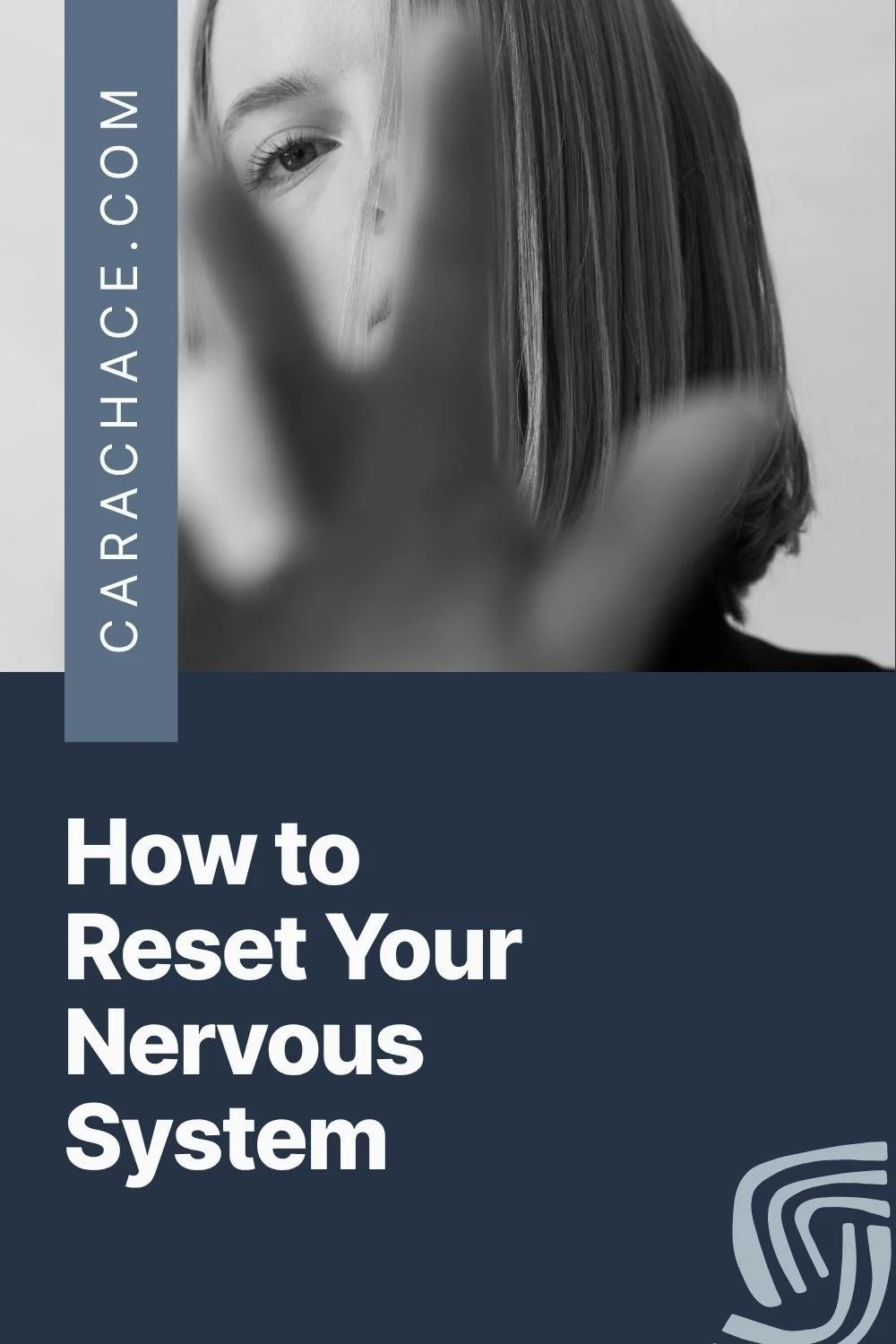How Digital Overload Is Wrecking Your Focus—And What to Do About It
Why You Can’t Focus—And Why It’s Not Your Fault
If you’ve noticed your ability to focus has tanked—or that even reading an email feels like a heavy lift—you’re not alone. And you’re not broken.
Content fatigue isn’t about laziness or poor discipline. It’s system failure.
Your brain wasn’t built to manage 10,000 inputs a day. Every scroll, notification, and pop-up steals a slice of your cognitive bandwidth. And when those inputs never stop, your attention span burns out.
What used to feel simple—writing a caption, answering an email, finishing a thought—now feels like climbing uphill with ankle weights. That’s not a motivation problem.
That’s your brain protecting itself from digital overwhelm.
In this blog, we’re breaking down:
Why content fatigue and cognitive overload happen in the first place
How to recognize them in your daily life
What you can actually do to reclaim focus with a nervous system reset—no app deletion required
What Content Fatigue Really Looks Like
You might think content fatigue is just too much scrolling or one-too-many Reels. But it’s deeper than that.
This is chronic cognitive overload—a steady stream of micro-decisions, context shifts, and dopamine spikes that leave your brain exhausted. You’re consuming more than your mental system can process. And over time, that builds into full-blown burnout.
Here’s how it shows up:
You stare at your screen but can’t absorb anything
You open apps out of habit but leave feeling drained, not entertained
You’re creating content, responding, and managing—but feel zero creative spark
You’re emotionally flat, easily irritated, or just numb
And it’s not just a consumer problem. For content creators, business owners, and professionals who live online, this gets compounded. When digital platforms are part of your work, you don’t just scroll—you strategize, produce, and publish. That pressure to stay visible while also managing a real life? It’s a direct route to mental fatigue.
You don’t need to work harder. You need a system that protects your mental energy and resets your nervous system.
The Hidden Mental Load of Digital Life
Every ping, swipe, and scroll is a micro-decision. Reply now or later? Click through or close the tab? Even passive actions drain energy when they pile up.
Layer that with real-world responsibilities—client work, family logistics, household tasks—and you’re managing hundreds of open loops without realizing it. It’s not just distraction. It’s system failure at the brain level.
Inside Chaos Detox, we identify this as a blend of three types of chaos: mental, calendar, and external. When they overlap, your focus fractures. There’s no margin left for deep work, planning, or even a simple nervous system reset.
Most people try to fix this with another app or better habits. But if your mental load keeps expanding without a structure to filter it, no productivity hack will stick.
Why Busy Women Are Hit Hardest
Multirole women operate in constant shift mode. Business owner. Parent. Household manager. Emergency responder. Add content creator, communicator, and inbox wrangler—and you’re holding twelve tabs open in your brain at all times.
That stack creates a unique fatigue: the kind that comes from being both overwhelmed and expected to perform.
You’re not just tired. You’re navigating decision fatigue, platform fatigue, and the quiet pressure to be visibly “on.” Even helpful content becomes noise. There’s no room to process it—just more input with nowhere to go.
This isn’t about overcommitting. It’s about living without a system that protects your cognitive energy.
Why Tech Breaks Don’t Fix It
Taking a break from Instagram might feel good for a week. But when your brain is used to constant input, the fatigue doesn’t disappear—it just goes quiet for a while.
Tech breaks help, but they’re not a solution. Because the moment you step back in, the notifications, expectations, and decision loops are all still waiting.
What actually reduces fatigue is having a structure to process and manage digital input. That looks like:
Tracking Attention Leaks: Where does your focus go by default? What steals your energy without your consent?
Designing a Recovery-First Week: Don’t just schedule tasks. Build in white space. Recovery isn’t a reward—it’s required.
Creating Input Rules: When and how do you let content in? A Theme Day framework, digital reset hours, and “no-scroll zones” keep your system from fragmenting again.
This is exactly what we unpack in Module 2, Lesson 1 of Chaos Detox—how to stop the chaos before it starts by building a proactive mental filter.
You don’t need less tech. You need fewer inputs that bypass your system.
How to Start Clearing Content Fatigue Today
You don’t need to overhaul your digital life overnight. What you need is a simple set of filters that help you become more intentional with how content enters your day.
Start here:
Pinpoint your worst “scroll spiral” windows. When do you find yourself picking up your phone without thinking—morning wake-up, post-lunch slump, late at night? Choose one of those times and create a clear block: no apps, no content, just a reset. Plug in a restorative alternative—music, journaling, quiet—something that calms your brain instead of feeding it.
Choose one platform to limit this week. Not to quit, but to observe. Which one drains you most without offering real value? Set a time limit or app block and pay attention to what happens—especially in your focus and mood. This is one of the first signs your system is reclaiming space.
Use this filter every time you open an app or read content: “Is this helping me focus—or just filling space?” That one question can stop reactive consumption before it starts. It creates a pause between stimulus and response—a principle we build into all the productivity planning in Chaos Detox.
You don’t need more rules. You need fewer inputs that bypass your awareness. That’s where clarity begins.
Conclusion: You’re Not Broken. Your System Is.
Digital burnout isn’t a failure of discipline. It’s the outcome of trying to live, work, and create without a way to manage the flood of input coming at you every day.
You don’t have to delete every app or disappear from the platforms that support your work. But you do need a structure that protects your energy and rebuilds your focus.
This is exactly what we walk through inside Chaos Detox. If this feels familiar, there’s a system waiting for you.
FAQS: Digital Overload & Productivity
-
Content fatigue is cognitive burnout caused by excessive digital consumption. It shows up as focus issues, creative blocks, and emotional numbness—even if you're consuming helpful content.
-
Content fatigue is a specific form of mental overload tied to digital input—scrolling, posting, responding, and reacting constantly. It’s especially common among creators and multitasking professionals.
-
Short breaks help, but they don’t solve the underlying problem. Without a system to manage how and when content enters your mental space, the fatigue comes right back.
-
Because they manage multiple roles, expectations, and mental loads—often without a structure that filters digital noise. They’re more susceptible to both internal and external chaos.
-
Track your “scroll spirals.” Notice where you lose time and energy. Then introduce simple boundaries and ask: “Is this helping me focus—or just filling space?” That’s where clarity starts.
-
Social Media Fatigue: Why It’s Happening and How to Fix It – Sweet Ella Bella
Burnout in Women: How to Recognize & Recover from Emotional Exhaustion – Revelare Recovery
What To Do When You're Sick of Social Media and Content Creation – Decor8
Content Fatigue: People Are Tired of Your Content (Here's Why) – Column Content
The Impact of Digital Fatigue on Social Media Marketing – Adriana Lacy Consulting






